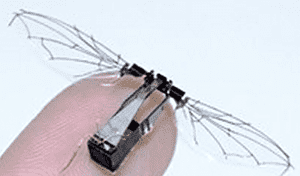A group of researchers at Universities of Sheffield and Sussex have embarked in a highly ambitious project, in a quest to accurately develop computer models of a honey bee brain. Findings during actual development and testing itself might help answer some of the most puzzling questions in neuroscience, in a bid to understand how animal cognition works.
The scientists intend on creating an artificial intelligence system for the honey bee, such that a flying autonomous robo-honey bee might sense the world around it, in terms of vision and smell, and act according to its external stimuli, just like the real insect would behave instead of just completing a series of pre-programmed tasks. Tasks the robot will be expected to perform, for example, will include finding the source of particular odours or gases in the same way that a bee can identify particular flowers.
“The development of an artificial brain is one of the greatest challenges in Artificial Intelligence. So far, researchers have typically studied brains such as those of rats, monkeys, and humans, but actually ‘simpler’ organisms such as social insects have surprisingly advanced cognitive abilities,” said Dr James Marshall, leading the £1 million EPSRC1 funded project in Sheffield.

Called “Green Brain”, the project inevitably draws comparison with the more famous IBM-sponsored Blue Brain initiative, which is developing brain modeling technologies using supercomputers with the ultimate goal of producing an accurate model of a human brain. While some of you might not think of Green Brain as ambitious or complex as other artificial intelligence projects, it’s worth considering that it’s moving in uncharted territory.
Green Brain’s researchers anticipate that developing a model of a honey bee brain will offer a more accessible method of driving forward our knowledge of how a brain’s cognitive systems work, leading to advances in understanding animal and human cognition. Also, the project will also likely provide a solid contribution to the development of artificial pollinators, such as those being researched by the National Science Foundation-funded Robobees project, led by Harvard University.
“Because the honey bee brain is smaller and more accessible than any vertebrate brain, we hope to eventually be able to produce an accurate and complete model that we can test within a flying robot,” said Dr. Marshall.
“Not only will this pave the way for many future advances in autonomous flying robots, but we also believe the computer modelling techniques we will be using will be widely useful to other brain modelling and computational neuroscience projects,” added Dr. Thomas Nowotny, the leader of the Sussex team.
What’s maybe more important than flying robots though, is understanding the honey bee itself. Honey bees are essential to the global ecosystem, as they pollinate crops and flowers. In recent years, their numbers have alarmingly gone down, and maybe this present research might aid in answering what is causing this bee mass retrieval, although mite infections and pesticides are quite probable causes, and maybe even help boost their numbers somehow. If anything, look for tiny robo-honey bees pollinating 2050’s crops.
source: www.shef.ac.uk.
Was this helpful?



